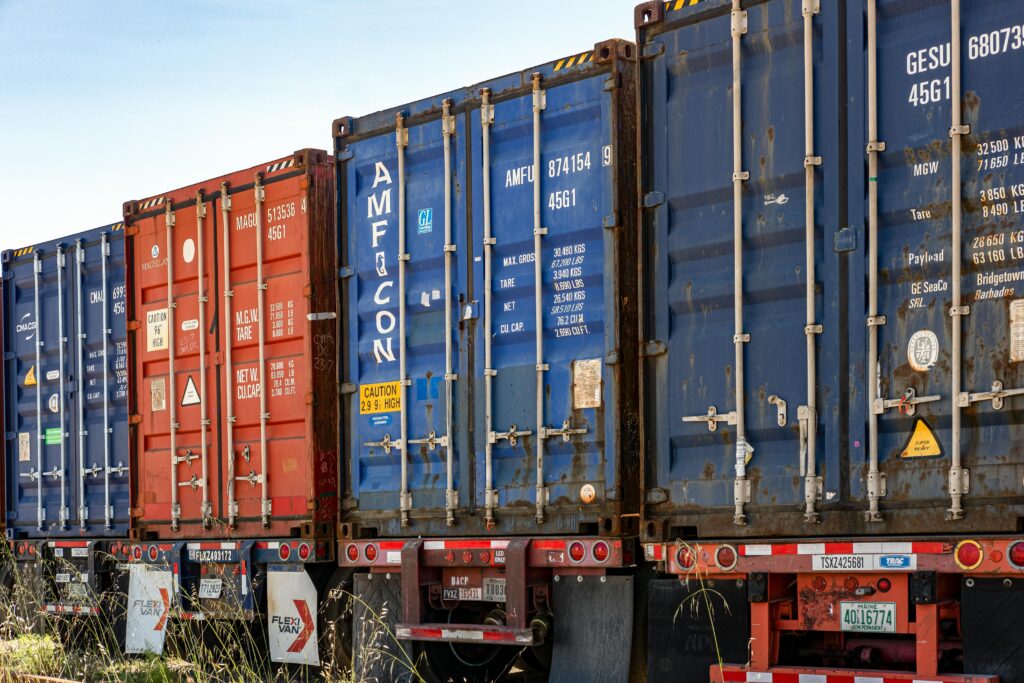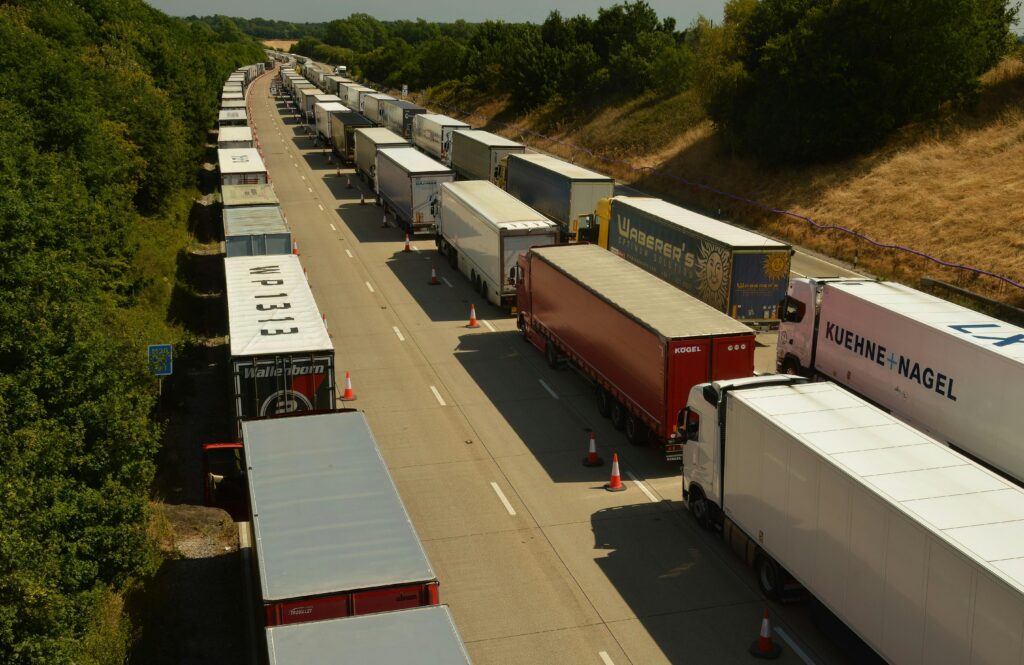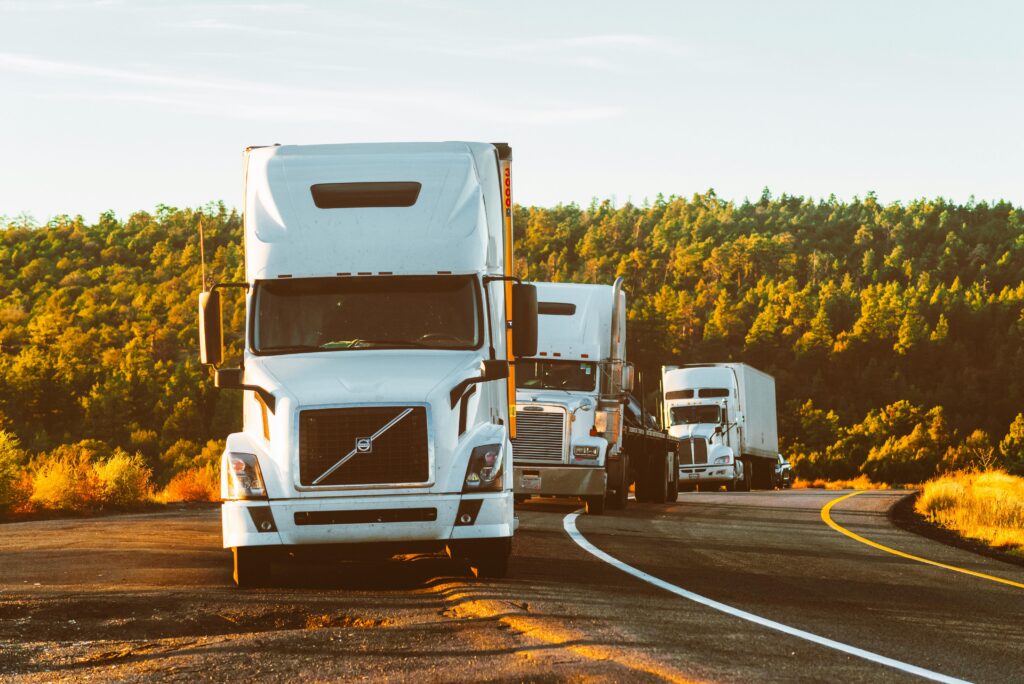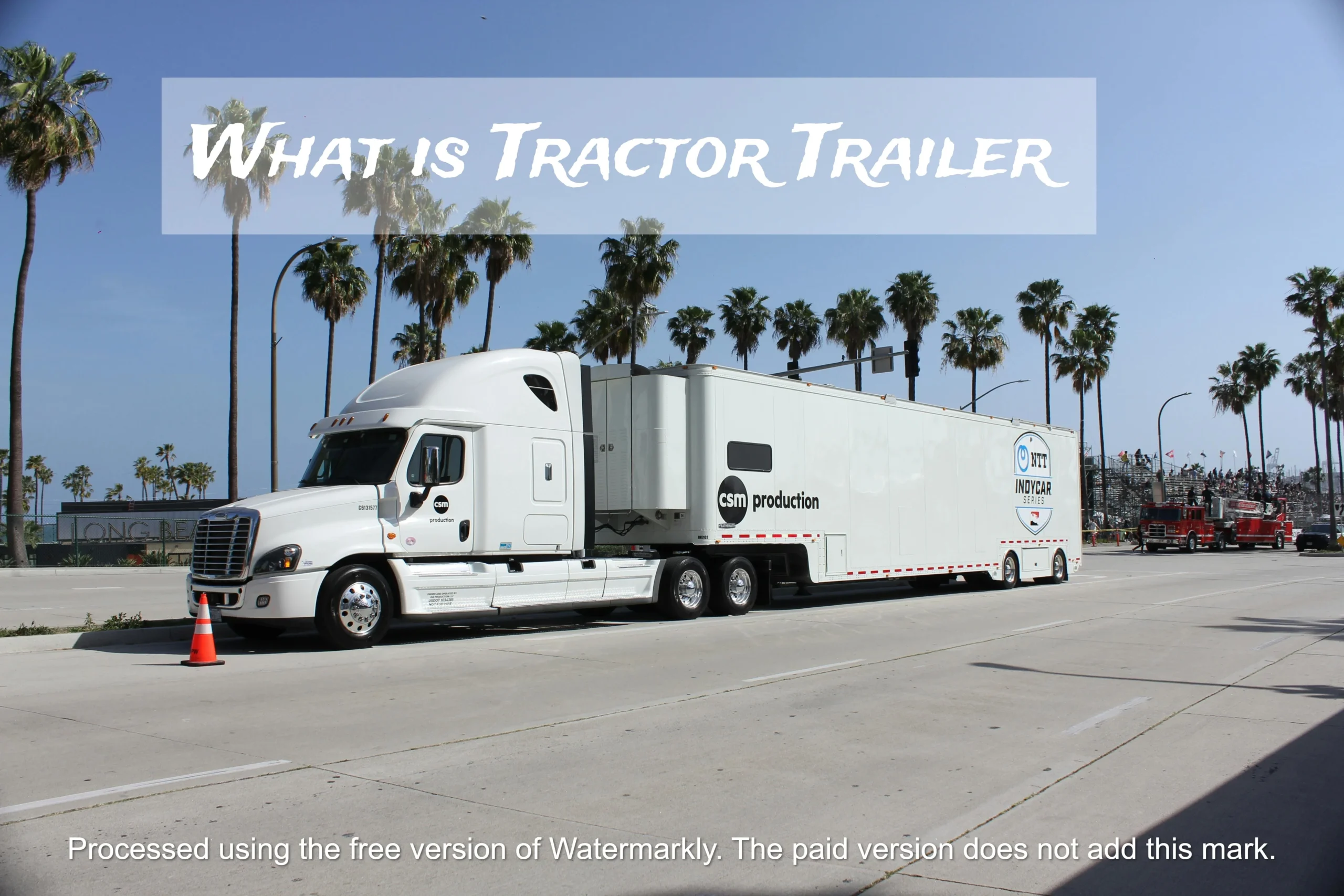A tractor-trailer, also known as a semi-truck or articulated lorry, is a type of vehicle combination consisting of a tractor unit (often referred to as a cab or truck) attached to a trailer. The tractor provides the engine power and steering capability, while the trailer carries freight or goods. These vehicles are commonly used for transporting goods over long distances and are a vital part of the transportation industry.
Introduction
In the world of commercial transportation, tractor trailers play a vital role in moving goods across cities, states, and even countries. These massive vehicles, also known as semi-trucks or big rigs, are a common sight on highways and roads, carrying everything from consumer products to raw materials. However, despite their ubiquitous presence, many people may not fully understand what a tractor trailer is and how it operates. This article aims to provide a comprehensive guide on tractor trailers, covering their definition, components, types, and the industry that revolves around them.
What is a Tractor Trailer?
A tractor trailer, also known as a semi-truck or a semi-trailer truck, is a combination vehicle consisting of two primary components: the tractor and the trailer. The tractor, often referred to as the truck or the cab, is the front section that houses the engine, transmission, and the driver’s cabin. The trailer, on the other hand, is the rear section designed to carry cargo or freight.
The Tractor
The tractor is the powerhouse of the tractor trailer combination. It is responsible for providing the necessary power and control to move the entire rig. Here are some key features of the tractor:
- Engine: Tractor engines are typically diesel-powered and designed for heavy-duty applications. They range from powerful inline-six cylinders to robust V8 and V12 configurations, capable of generating immense torque and horsepower.
- Transmission: Tractor transmissions are built to handle the tremendous loads and stresses of hauling heavy trailers. Many modern tractors feature automated manual transmissions (AMTs) or fully automatic transmissions for improved efficiency and driver comfort.
- Cab: The cab, or the driver’s compartment, is where the operator sits. It is designed with ergonomics and safety in mind, featuring comfortable seating, advanced instrumentation, and various driver-assist technologies.
- Chassis: The chassis of the tractor is the backbone that supports the cab, engine, transmission, and other components. It is engineered to withstand the rigors of hauling heavy loads over long distances.
Tractor Configurations
Tractors come in different configurations to suit various operational requirements. Some common configurations include:
- Day Cab: A day cab tractor is designed for short-haul or regional operations, without a sleeper berth.
- Sleeper Cab: A sleeper cab tractor features a built-in sleeper compartment behind the driver’s seat, allowing drivers to rest during long-haul trips.
- Cab-Over-Engine (COE): In a COE configuration, the cab is positioned over the engine, resulting in a more compact and maneuverable design, often used in urban or tight spaces.
The Trailer
The trailer is the cargo-carrying component of the tractor trailer combination. It is designed to haul a wide range of goods, from palletized freight and bulk materials to specialized loads like automobiles or livestock.
Trailer Types
Trailers come in various shapes, sizes, and configurations to accommodate different cargo types and operational requirements. Some common trailer types include:
- Dry Van: A dry van trailer is an enclosed, box-like structure used to transport general cargo that needs protection from the elements.
- Flatbed: A flatbed trailer is an open-deck design used for hauling oversized or irregular loads that cannot be enclosed, such as machinery or construction materials.
- Refrigerated (Reefer): Reefer trailers are insulated and equipped with a refrigeration unit, allowing the transportation of perishable goods like food or pharmaceuticals at controlled temperatures.
- Tanker: Tanker trailers are designed to carry liquid or gaseous cargo, such as fuel, chemicals, or milk.
- Container: Container trailers are specifically built to transport intermodal shipping containers, facilitating the movement of goods between different modes of transportation.
- Specialty: There are also specialized trailers for specific cargo types, such as auto haulers, livestock trailers, or low-bed trailers for oversized loads.
Trailer Components
While the specific components may vary depending on the trailer type, most trailers share some common elements:
- Frame: The frame is the structural backbone of the trailer, providing strength and support for the cargo and other components.
- Suspension: The suspension system, consisting of air or spring rides, helps distribute the weight of the cargo and provides a smooth ride.
- Landing Gear: The landing gear, typically found at the front of the trailer, supports the trailer when it is detached from the tractor.
- Brakes: Trailers are equipped with their own braking system, often air brakes, to assist in slowing and stopping the entire combination.
- Lighting and Safety Equipment: Trailers are outfitted with various lighting systems, reflectors, and other safety equipment to enhance visibility and comply with regulations.
The Tractor Trailer Industry
The tractor trailer industry is a vital cog in the global supply chain, responsible for transporting a vast array of goods across cities, states, and countries. This industry plays a crucial role in supporting economic growth and facilitating trade.
Trucking Companies
Trucking companies are the backbone of the tractor trailer industry. These companies range from small, family-owned operations to large, multinational corporations. They are responsible for managing fleets of tractor trailers, employing drivers, and coordinating the transportation of goods across various routes and destinations.
Types of Trucking Companies
The trucking industry can be broadly categorized into several types of companies:
- Truckload Carriers: These companies specialize in transporting full trailer loads of cargo directly from origin to destination, without intermediate stops or consolidation.
- Less-than-Truckload (LTL) Carriers: LTL carriers consolidate and transport smaller shipments from multiple customers in a single trailer, making intermediate stops for pickups and deliveries.
- Specialized Carriers: These companies focus on transporting specific types of cargo that require specialized equipment or handling, such as hazardous materials, oversized loads, or temperature-controlled goods.
- Logistics and Freight Forwarding Companies: These companies coordinate the movement of goods across multiple modes of transportation, including tractor trailers, rail, air, and maritime shipping.
Regulations and Safety
The tractor trailer industry is subject to stringent regulations and safety standards to ensure the safe and efficient transportation of goods. These regulations are established and enforced by various government agencies, such as the Federal Motor Carrier Safety Administration (FMCSA) in the United States.
Key Regulations and Standards
Some of the key regulations and standards governing the tractor trailer industry include:
- Hours of Service (HOS) Regulations: These regulations limit the number of hours a driver can operate a commercial vehicle, ensuring adequate rest periods to prevent fatigue-related accidents.
- Commercial Driver’s License (CDL) Requirements: Drivers operating tractor trailers must obtain a CDL, which involves specialized training and testing to ensure proficiency in handling these large vehicles.
- Vehicle Inspections and Maintenance: Tractor trailers must undergo regular inspections and maintenance to ensure they meet safety standards and comply with emissions regulations.
- Cargo Securement Rules: Specific rules govern how cargo must be properly secured and distributed within the trailer to prevent shifting or spilling during transport.
- Hazardous Materials Regulations: Strict guidelines dictate the handling, labeling, and transportation of hazardous materials, such as chemicals, explosives, or radioactive substances.
Environmental Impact and Sustainability
As with any transportation industry, the tractor trailer sector has an impact on the environment. However, efforts are underway to mitigate this impact and promote sustainability within the industry.
Initiatives for Eco-Friendly Trucking
Several initiatives and technologies are being adopted to make tractor trailer operations more environmentally friendly:
- Alternative Fuels: The use of alternative fuels, such as natural gas, biodiesel, or electricity, can reduce emissions and reliance on traditional fossil fuels.
- Aerodynamic Design: Improved aerodynamics in tractor and trailer designs can significantly improve fuel efficiency and reduce emissions.
- Idle Reduction Technologies: Technologies like auxiliary power units (APUs) or truck stop electrification can eliminate the need for idling during rest periods, reducing fuel consumption and emissions.
- Route Optimization: Advanced logistics software and telematics can optimize routing and reduce empty miles, leading to lower fuel consumption and emissions.
- Emission Control Systems: Advances in emission control technologies, such as selective catalytic reduction (SCR) and diesel particulate filters (DPFs), can significantly reduce harmful emissions from tractor engines.
Tractor Trailer Operation and Safety
Operating a tractor trailer is a demanding task that requires specialized training, skill, and adherence to safety protocols. Ensuring the safe operation of these massive vehicles is paramount to protecting the lives of drivers, other motorists, and pedestrians on the road.
Driver Training and Qualifications
Becoming a tractor trailer driver involves extensive training and licensing requirements. In most jurisdictions, prospective drivers must obtain a Commercial Driver’s License (CDL) by completing a comprehensive training program and passing written and practical exams.
CDL Training and Testing
The CDL training and testing process typically involves the following components:
- Classroom Instruction: Drivers receive classroom-based training on topics such as vehicle components, air brakes, cargo securement, and federal regulations.
- Behind-the-Wheel Training: Hands-on training is provided in a controlled environment, allowing drivers to practice essential skills like backing up, coupling and uncoupling trailers, and maneuvering in various situations.
- Road Tests: Prospective drivers must demonstrate their proficiency by passing a series of road tests, including vehicle inspection, basic control skills, and driving on public roads.
- Endorsements: Additional endorsements may be required for transporting specific types of cargo, such as hazardous materials, tankers, or double/triple trailers.

Defensive Driving and Safety Protocols
Due to the size and weight of tractor trailers, defensive driving and adherence to safety protocols are crucial for preventing accidents and ensuring the well-being of all road users.
Safe Driving Practices
Some key safe driving practices for tractor trailer operators include:
- Maintaining Proper Following Distance: Tractor trailers require significantly longer stopping distances than passenger vehicles, necessitating increased following distances.
- Anticipating Hazards: Drivers must constantly scan the road ahead and anticipate potential hazards, such as construction zones, traffic congestion, or adverse weather conditions.
- Controlling Speed: Excessive speed can increase the risk of rollovers, jackknifing, and loss of control, especially when negotiating turns or navigating adverse conditions.
- Proper Merging and Lane Changes: Due to their size and blind spots, tractor trailers require careful merging and lane changes, using turn signals and checking mirrors and blind spots thoroughly.
- Avoiding Distracted Driving: Distractions such as texting, eating, or adjusting vehicle controls can have catastrophic consequences when operating a tractor trailer.
Safety Technologies
Modern tractor trailers are equipped with various safety technologies to assist drivers and reduce the risk of accidents. These include:
- Electronic Stability Control (ESC): ESC systems help prevent rollovers and loss of control by automatically applying brakes and reducing engine power when the vehicle becomes unstable.
- Forward Collision Warning (FCW) and Automatic Emergency Braking (AEB): These systems use radar or camera-based sensors to detect potential collisions and alert the driver or automatically apply the brakes.
- Lane Departure Warning (LDW) and Lane Keeping Assist (LKA): LDW systems warn drivers when they unintentionally drift out of their lane, while LKA systems provide corrective steering input to keep the vehicle in its lane.
- Blind Spot Monitoring (BSM): BSM systems use sensors to detect vehicles in the tractor trailer’s blind spots and provide visual or audible alerts to the driver.

Future of Tractor Trailers
As technology continues to evolve and societal demands shift, the tractor trailer industry is poised for significant changes and advancements in the coming years.
Autonomous Trucking
One of the most anticipated developments in the tractor trailer industry is the advent of autonomous or self-driving trucks. Several companies and research institutions are actively working on developing and testing autonomous trucking technologies.
Levels of Automation
Autonomous trucking is often categorized into different levels of automation, ranging from driver-assisted systems to fully self-driving vehicles:
- Level 1 (Driver Assistance): Systems like adaptive cruise control and lane keeping assist provide limited assistance to the driver.
- Level 2 (Partial Automation): The vehicle can control both steering and acceleration/deceleration under certain conditions, but the driver must remain engaged and monitor the environment.
- Level 3 (Conditional Automation): The vehicle can handle most driving tasks, but a human driver must be ready to take control when necessary.
- Level 4 (High Automation): The vehicle can operate autonomously in specific operational design domains (ODDs), such as highways or defined geographic areas, without human intervention.
- Level 5 (Full Automation): The vehicle can operate entirely autonomously in all conditions, without the need for a human driver or monitoring.
Benefits and Challenges of Autonomous Trucking
The potential benefits of autonomous trucking include increased safety, improved fuel efficiency, reduced labor costs, and enhanced supply chain efficiency. However, there are also significant challenges to overcome, such as regulatory hurdles, cybersecurity concerns, public acceptance, and the potential impact on truck driver employment.

Electric and Alternative Fuel Trucks
As concerns over environmental impact and sustainability grow, the tractor trailer industry is exploring alternative fuel sources and powertrain technologies to reduce emissions and dependence on fossil fuels.
Electric Trucks
Electric trucks, powered by rechargeable battery packs, are gaining momentum in the industry. While still in relatively early stages, several manufacturers are developing and testing electric tractor trailers for short-haul and regional operations.
The benefits of electric trucks include zero tailpipe emissions, lower operating costs, and quieter operation. However, challenges such as limited range, long charging times, and the need for robust charging infrastructure must be addressed for widespread adoption.
Hydrogen Fuel Cell Trucks
Hydrogen fuel cell technology is another alternative being explored for tractor trailers. Fuel cell trucks generate electricity through a chemical reaction between hydrogen and oxygen, producing only water vapor as a byproduct.
While offering longer ranges and faster refueling times compared to battery-electric trucks, hydrogen fuel cell trucks face challenges related to the production, storage, and distribution of hydrogen fuel, as well as the high costs associated with the technology.
Connected and Intelligent Transportation Systems
The tractor trailer industry is also embracing connected and intelligent transportation systems to enhance efficiency, safety, and sustainability.
Telematics and Fleet Management
Telematics systems, which combine GPS tracking, onboard diagnostics, and wireless communications, are becoming increasingly prevalent in tractor trailer fleets. These systems enable real-time monitoring of vehicle location, performance, and driver behavior, allowing for improved route planning, preventative maintenance, and safety monitoring.
Fleet management software integrates telematics data with other operational data, such as fuel consumption, cargo information, and regulatory compliance, providing a comprehensive platform for optimizing fleet operations and reducing costs.
Intelligent Transportation Systems (ITS)
Intelligent Transportation Systems (ITS) involve the integration of advanced technologies and communication networks to improve transportation safety, efficiency, and mobility. In the context of tractor trailers, ITS technologies like Vehicle-to-Vehicle (V2V) and Vehicle-to-Infrastructure (V2I) communication can provide real-time information about road conditions, traffic congestion, and potential hazards, enabling more informed decision-making and safer operations.
Conclusion
Tractor trailers are the workhorses of the modern transportation industry, playing a vital role in moving goods across cities, states, and countries. From their powerful engines and specialized trailers to the skilled drivers who operate them, these massive vehicles are marvels of engineering and logistics.
As the tractor trailer industry continues to evolve, embracing new technologies and innovations, it will play an increasingly important role in shaping the future of transportation. Autonomous trucking, electric and alternative fuel powertrains, and connected and intelligent transportation systems are just a few of the advancements on the horizon, promising improved safety, efficiency, and sustainability.
While the road ahead may present challenges, the tractor trailer industry remains committed to meeting the ever-growing demands of global trade and commerce, while prioritizing safety and environmental responsibility. With continued innovation and collaboration among manufacturers, operators, and regulatory bodies, the future of tractor trailers promises to be a fascinating and transformative journey.
FAQs
1. What is the difference between a tractor and a trailer?
The tractor is the front section of a tractor trailer combination, housing the engine, transmission, and driver’s cabin. It provides the power and control for the entire rig. The trailer, on the other hand, is the rear section designed to carry cargo or freight. It is attached to the tractor and relies on the tractor for propulsion.
2. What types of trailers are used in the tractor trailer industry?
There are various types of trailers used for different cargo and operational requirements, including dry vans for general freight, flatbeds for oversized or irregular loads, refrigerated (reefer) trailers for perishable goods, tankers for liquids and gases, container trailers for intermodal shipping, and specialized trailers.
3. What are the licensing requirements to operate a tractor trailer?
In most jurisdictions, drivers must obtain a Commercial Driver’s License (CDL) to operate a tractor trailer. This involves completing a comprehensive training program and passing written and practical exams. Additional endorsements may be required for transporting specific types of cargo, such as hazardous materials, tankers, or double/triple trailers.
4. What are some common safety technologies used in tractor trailers?
Modern tractor trailers are equipped with various safety technologies to assist drivers and reduce the risk of accidents. These include Electronic Stability Control (ESC) to prevent rollovers, Forward Collision Warning (FCW) and Automatic Emergency Braking (AEB) systems, Lane Departure Warning (LDW) and Lane Keeping Assist (LKA), and Blind Spot Monitoring (BSM).
5. How does autonomous trucking work, and what are the potential benefits and challenges?
Autonomous trucking involves the development of self-driving tractor trailers with varying levels of automation, ranging from driver assistance systems to fully autonomous vehicles. Potential benefits include increased safety, improved fuel efficiency, reduced labor costs, and enhanced supply chain efficiency. However, challenges include regulatory hurdles, cybersecurity concerns, public acceptance, and the potential impact on truck driver employment.

